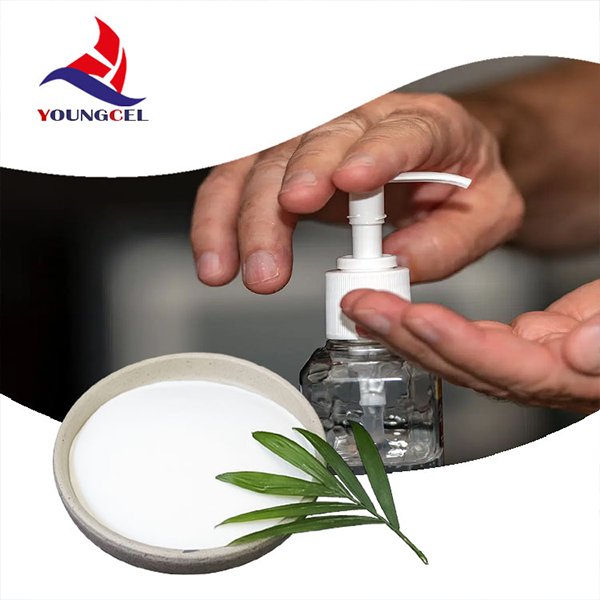Exploring the Applications and Properties of Methylcellulose and Hydroxypropyl Methylcellulose
Methylcellulose (MC) and Hydroxypropyl Methylcellulose (HPMC) are cellulose derivatives that have garnered significant attention in various fields due to their unique properties and versatility. Both compounds are non-ionic, hydrophilic polymers known for their ability to form gels and retain water, which has made them valuable in industrial, pharmaceutical, and food applications.
Chemical Structure and Properties
Methylcellulose is a functional derivative of cellulose, where some of the hydroxyl groups in the glucose units are replaced by methyl groups. Hydroxypropyl Methylcellulose, on the other hand, further modifies MC by introducing hydroxypropyl groups, enhancing its solubility in cold water. The substitution of these groups modifies the thermal and rheological properties of the cellulose, making HPMC soluble in a wider range of conditions.
Both MC and HPMC exhibit impressive thermal stability, viscosity, and gel-forming capabilities. Their viscosity can vary widely depending on the degree of substitution and molecular weight, which allows formulators to tailor their properties for specific applications. For instance, low-viscosity grades are often employed in applications requiring easy flow, while high-viscosity types provide better stability and structure.
Applications in Pharmaceuticals
The pharmaceutical industry significantly benefits from the use of MC and HPMC. They serve as excipients, which are substances formulated alongside the active ingredients of medications. HPMC, in particular, is frequently used in the production of controlled-release drug formulations due to its ability to form a gel-like barrier that regulates drug release rates.
Moreover, HPMC is commonly used in tablet binding and coating processes. Its adhesive properties help in holding the tablet components together while also enhancing the tablet's stability and integrity. Additionally, its non-toxic nature makes it suitable for a variety of formulations, including those for sensitive populations such as children and the elderly.
mecellose hpmc

Utilization in Food Industry
In the food sector, methylcellulose and HPMC are valued for their functionalities as food additives. They are often employed as thickening agents, stabilizers, and emulsifiers, significantly improving the texture and mouthfeel of various products, such as sauces, dressings, and dairy products. Their gelling properties come into play during the preparation of vegetarian and vegan food items, where they can substitute for gelatine in producing jellies, marshmallows, and other gelatin-based desserts.
Additionally, these compounds can help in fat reduction in low-calorie food products. By mimicking the creamy texture of fats, MC and HPMC allow manufacturers to create healthier alternatives without compromising on taste and texture.
Advancements in Construction
MC and HPMC have also found an essential role in the construction industry, particularly in the formulation of dry mix mortars and other building materials. Due to their water-retention properties, these cellulose ethers improve the workability of mortars and enhance adhesion, allowing for easier application and longer open time. This feature is particularly beneficial in tile adhesives, plasters, and joint compounds.
The use of HPMC in construction materials has been shown to improve overall durability and performance. By preventing quick evaporation of water during the curing process, HPMC ensures that the hydration of cement is maintained, which is crucial for achieving optimal strength and stability in concrete structures.
Conclusion
Methylcellulose and Hydroxypropyl Methylcellulose exemplify the versatility and utility of cellulose derivatives in modern applications. With their unique chemical properties, they serve critical roles in the pharmaceutical and food industries, as well as in construction materials. The ability to customize their viscosity and other characteristics paves the way for innovative solutions across various sectors. As research continues to explore further modifications and applications, MC and HPMC are likely to maintain their significance in advancing both industrial practices and consumer products. The ongoing development and innovation surrounding these compounds will undoubtedly lead to enhanced functionalities and new uses in the future.
-
The Application and Significance of Construction RdpNewsMay.19,2025
-
Industrial Grade HpmcNewsMay.19,2025
-
Building Coating Adhesive Building Coating Adhesive HpmcNewsMay.19,2025
-
Application Of Hpmc For Detergent For Detergent In DetergentsNewsMay.19,2025
-
Application Of Hpmc Cellulose In Cement-Based MaterialsNewsMay.19,2025
-
Application Of High Quality Hpmc For Construction In The Field Of ConstructionNewsMay.19,2025




